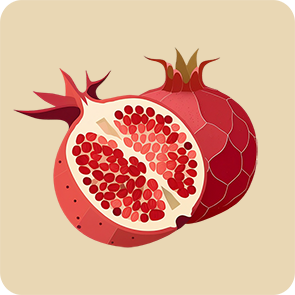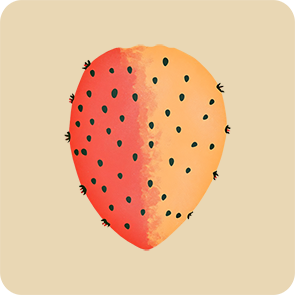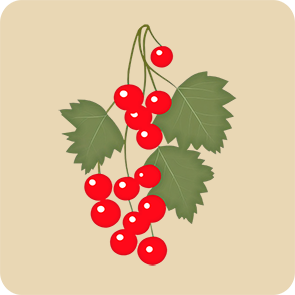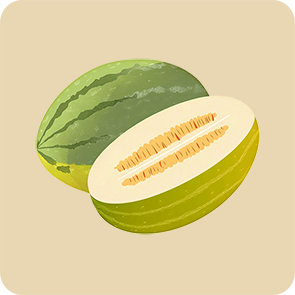
Peach
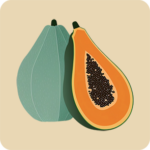
Papaya

Passion Fruit
With its vibrant, wrinkled skin and tangy-sweet pulp, passion fruit is a tropical treat full of nutrients and antioxidants.
17
1 medium fruit
(18 grams)
CAL
A
Nutri-Score
Low in calories, high in fiber, and packed with vitamins.
Value per 100 grams & per cup (237g):
56 kcal / 133 kcal
Protein
1.6 grams / 3.8 grams
Fats
0.4 grams / 0.9 grams
Carbohydrates
13.4 grams / 31.8 grams
Fiber
10.4 grams / 24.7 grams
Vitamins & Nutrients
- Vitamin C: Supports immune function and skin health.
- Vitamin A: Helps maintain healthy vision and skin.
- Iron: Important for blood health and oxygen transport.
- Magnesium: Supports muscle and nerve function.
Satiety and Feelings
Passion fruit is aromatic, tangy, and slightly sweet. Its fiber content promotes fullness, while the water-rich pulp helps with hydration.
What does 100 g look like?
About 1 to 1.5 large passion fruits, peeled and with the pulp scooped out or 1/2 cup of fresh pulp.
How many to reach 2000/2500 calories?
About 70 passion fruits.
Daily Value per 100 grams %
Did you know?
Ancient Origins: Passion fruit, native to South America, was named after the Passionflower (Passiflora edulis), discovered by Spanish missionaries in the 16th century. They associated the plant with the crucifixion due to its unique flower’s resemblance to Christian symbols, leading to its name “Passion” fruit.
Symbol of the Incas: Passion fruit has long been revered in South American culture. The Incas called it the “fruit of the gods” due to its vibrant appearance and powerful medicinal properties.
Globally Loved: Although originating in South America, passion fruit has now spread to tropical regions around the world, becoming a popular addition to both savory and sweet dishes.
Drawback ⚠️
Acidic nature: Passion fruit is quite acidic and may cause irritation to people with sensitive stomachs or acid reflux.
High in sugar: While natural, the sugar content in passion fruit can contribute to calorie intake if eaten in large amounts.
Not always available: Fresh passion fruit can be difficult to find in certain regions or seasons, making it less accessible.




















































